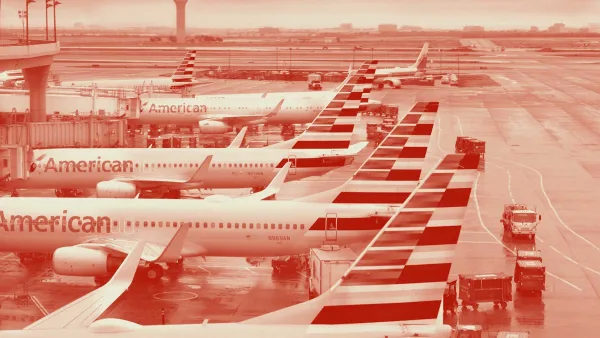
American Airlines isn’t exactly flying high these days, and it only has itself to blame for the significant turbulence now rocking its business. Though company CEO Robert Isom assumed responsibility for piloting the gaffes around its ticket sales policy that contributed to a sharp drop in quarterly profits the carrier announced Thursday, it’s likely to take months–or even years–for corrective action he promised to lure back angered business customers, many of whom have taken to flying with the competition.
Thursday’s quarterly earnings call wasn’t the first time American acknowledged severe flaws with the New Distribution Capability (NDC) policy it adopted in mid-2023. The system restricted how, and where, tickets for the airline’s flights could be bought–managing to infuriate travel agency partners, business clients, and pretty much everybody else it had worked with in the process. Yesterday’s results provided the first detailed measure of how much that annoyance had cost the company: a 46 percent decline in second-quarter net income, which came in at $717 million, compared to $1.3 billion the previous year.
Just as bad, Isom said the third quarter would probably be a break-even period, and the full-year outlook revised downward as the company works to undo the NDC initiative.
How did the NDC do all that damage on its own? For starters, it required American to remove about 40 percent of its lowest-priced seats from popular online platforms many fliers now use to book trips. At the same time, the airline moved to restrict sales to direct purchases from its site, app, and its platforms–in particular by cutting out professional travel agencies and ticketing intermediaries that companies often use for employee business trips. Clients that wanted frequent flier points, preferred passenger status, and other awards were obliged to make purchases through company-owned channels to get the airline perks.
The objective–American reasoned in Apple-esque terms–was to control the entire chain of passenger activity between ticket buying and boarding, reducing costs, eliminating agency commissions, and restricting bonuses to fliers using the airline’s channels.
That may sound efficient and futuristic, but it mostly cheesed off American’s most lucrative business customers to no end. The price of that vexation became clear in the second-quarter results, full-year warnings, and the corporate-sized portion of crow Isom noshed while promising to correct the error.
Global Business Travel, BCD Travel, Carlson Wagonlit Travel, and AAA Travel, as well as thousands of smaller specialized enterprises that companies trust and rely on for making the best travel arrangements.
Alienating key participants in the airline travel economy was bad enough–then it turned out American’s technology wasn’t equal to the tasks the NDC system required.
“It seems that American may now admit to what we’ve expressed for months: its NDC technology was underdeveloped, and its implementation deadlines were both arbitrary and unrealistic,” crowed the American Society of Travel Advisors (ASTA) when the airline announced it was abandoning the system–and promising to avenge the unprovoked slight. “This news provides an opportunity for ASTA to continue its work opposing American Airlines’ monopolistic, anti-competitive behavior.”
Former American Airlines business passengers may not be any more forgiving. Many of those frequent professional fliers have turned to competitors like Delta and United in response to the NDC system–expanding those carriers’ share of the lucrative market category in the process. Some sector observers say it could take up to 18 months, maybe even two years for American to lure those customers back–even if recently excluded travel agencies can be convinced to help.